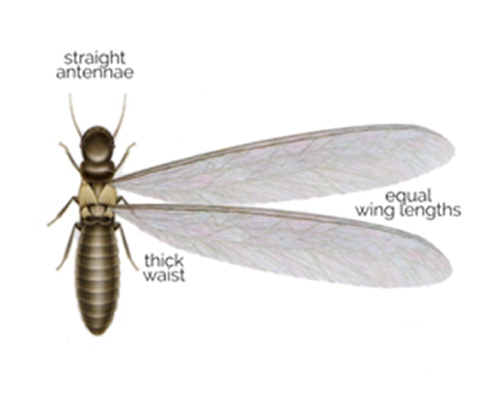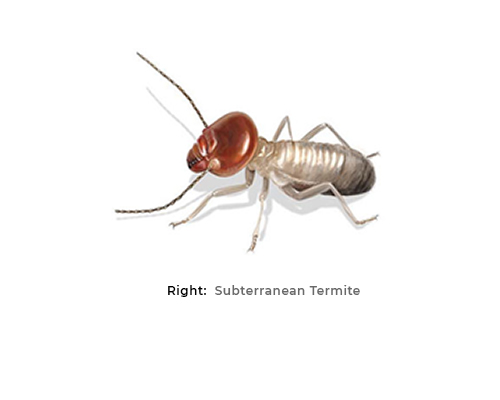
You should have your home inspected at least once a year. Please call a professional Pest Control Company to have the inspection done.



Subterranean termitesinvade homes from soil around and beneath structures. When structural wood is in contact with soil and termites detect this wood, they begin to feed. Cracks and seams in foundations and siding, hollow blocks, masonry, and rock foundations allow access points to subterranean termites. These termites must maintain contact with soil in order to retain enough moisture to remain alive. They bring a faeces/soil mixture into their wood burrows to keep the moisture where they feed, and the colonies exist in the soil.

Drywood termiteshave a thick waist, short legs, and straight antennae. Drywood termite swarmers, also known as alates, have wings that are the same length. Termite soldiers have mouthparts (mandibles) with teeth.
Liquid termite solution, applicable for both outdoor and indoor use, will be applied to the building foundation to provide a protective barrier around the property. In addition to immediate protection, this treatment guards against future infestations as well. For different types of termites, different treatment approaches are used. These treatments include:
FLICK PROOF (5 Year Guarantee -Pre-existing buildings): Spraying & treating foundation, footings and excavated areas before pouring of concrete
There are two common termites to worry about: drywood termites and subterranean termites. The main difference between these two is that drywood termites infest dry wood and do not require contact with the soil, while subterranean termites need contact with soil or water to survive.